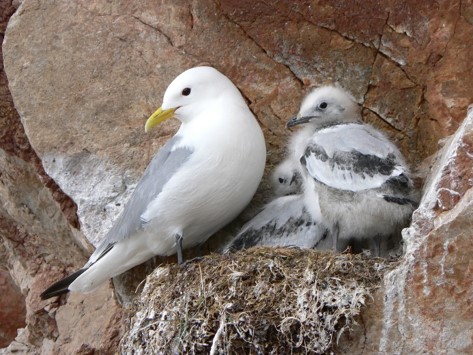PCB eliminated from the body through egg laying
Several years of research have now revealed that the blood levels of legacy organochlorines in black-legged kittiwakes on Svalbard vary within the breeding season, but in a consistent pattern between years. There are strong indications that the birds are highly exposed to contaminants in their wintering areas, but the effect of these toxins is manifested during the breeding season.
Environmental contaminants are toxic chemicals that are released by humans and decompose very slowly. One of their common features is that they are stored in body fat (lipids) in different parts of the organism. Animals living in the Arctic build up large amounts of fat in their bodies, and the toxins will be relatively harmless as long as they remain stored in the fat. But when the lipids are mobilized, the toxins are released into the blood stream and make their way to sensitive organs such as brain, liver and kidneys, where they can cause substantial damage. By sampling blood from adult kittiwakes during pre-breeding, incubation and chick-rearing over five breeding seasons, researchers have now discovered how the levels of PCB and DDT vary between and within breeding seasons.
Read the article:
It turned out that the levels of PCB in the blood increased by 2.5 times from the arrival of the birds in the colony in April until their chicks had hatched. This is mainly caused by a decrease in body weight as a result of fat mobilization during the breeding season, which in turn releases the contaminants to the blood. It was also shown that male and female kittiwakes had equivalent levels of contaminants before egg laying, but during incubation and chick-rearing, the females had lower concentrations. In other words, the females seem able to eliminate a considerable amount of the toxins through egg laying. The researchers also found an annually repeating pattern of contaminant concentrations in the blood of the birds throughout the breeding season.
Contact person: Jan Ove Bustnes, NINA

Photo: Céline Clément Chastel
